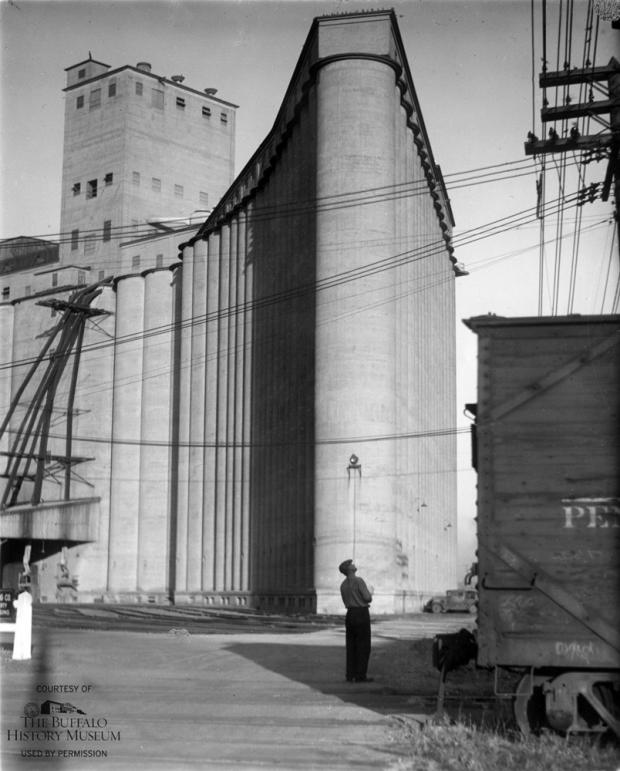Looking Backward: Lake and Rail Elevator
The Lake and Rail Elevator is an example of what Le Corbusier called “the magnificent first fruits of the new age,” a new kind of building that matched the technological aspirations of the Machine Age. In this undated photograph by Wilbur H. Porterfield, the Lake and Rail Elevator is seen from Childs Street, a man at center giving a sense of its immense scale. The elevator was built in four stages from 1927 to 1930, topping out at a capacity of 4.4 million bushels. Its stored grain, shipped by rail and lake freighter, fed the adjacent mill of the International Milling Co., manufacturers of Robin Hood flour. The elevator’s unusual shape is determined by the bends of the Buffalo River and adjacent railways. A flat wall built around cylindrical bins faces the waterside. At 150 feet in height, its silos are the tallest of any main elevator in Buffalo. Closed by ConAgra is 2002, the Lake and Rail was purchased and reopened as a storage elevator by Whitebox Commodities Holdings Corp. in 2008. It is one of three elevator complexes still in use in Buffalo.
A view down Childs Street:
Image courtesy of The Buffalo History Museum. Used by permission.

